#Aphorism Recordings
Explore tagged Tumblr posts
Text

Tetragrammacide | Typho-Tantric Aphorisms from the Arachneophidian Qur'an | 2023
Indian Black Death Metal
Artwork by Orryelle Defenestrate-Bascule
#Tetragrammacide#Typho-Tantric Aphorisms from the Arachneophidian Qur'an#Indian Black Metal#Black Metal#Black Death Metal#music#band#art#artwork#artist#Orryelle Defenestrate-Bascule#Iron Bonehead#Davide Billia#MK2 Recording Studio#Bandcamp
95 notes
·
View notes
Text
walrusfairy
Apparently there is tumblr discourse or drama over this absurdist poll question
In the middle of the night, you hear a knock on your door. You go to open it, and you find on the other side, one of the following options. Which option would be more surprising to you? -A Fairy -A Walrus Explain your answer.
Unlike the blue pill/red pill discourse, at least this question cuts to a clear ideological difference.
Sherlock Holmes famously put it "Once you eliminate the impossible, whatever remains, no matter how improbable, must be the truth." Douglas Adams in his book "Dirk Gently's Holisitic Detective Agency" (you should read it) spends much of the book reversing this aphorism: "Once you eliminate the improbable, whatever remains, no matter how impossible, must be the truth." We, after all, know a lot about human nature and practicality as we must deal with them every day, while we take scientific truths and metaphysics for granted and are actually quite ignorant of their foundation.
The question takes for granted that I even know that fairies don't exist. I don't know this!
"Supernatural" knowledge in the sense of institutional religions and recorded superstitions is falsifiably wrong, as people have put their claims to test and they don't bear out. But this is very different than "there exist things we do not know about." There's a lot we don't know! I doubt creatures resembling our stories of fairies exist, but if one did, it wouldn't upend my view of the entire world.
46 notes
·
View notes
Text
Total Solar Eclipse Weather ☀
Most of us have heard this aphorism in some form: Climate is what you expect, weather is what you get.
Based on climatological records, long range predictions for conditions along the path of totality for the April 8th total solar eclipse had suggested that the Texas portion of the path would be relatively favorable while the New England portion would be unfavorable. But as it turns out, almost the opposite is true.
But as of Sunday, things don't look bright for most of the Texas portion of the path with the possible exception of the extreme northern end near Oklahoma. On the other hand, the portion of the path that goes through northern New England looks quite good for Monday afternoon.
Tomer Burg is a PhD candidate in meteorology at the University of Oklahoma. His 2021 hurricane season forecasts were superb. For example: he was way ahead of just about everybody in forecasting the effects of the remnants of Hurricane Ida on the Northeast.
So Tomer has added a section on eclipse visibility to his academic site. The page of most interest is the City Dashboard.
Go to the link below and click City Dashboard on the left.
2024 Eclipse Forecasts
At the dashboard you'll find a small map on the upper left showing the path of totality with circles indicating various locations of interest. Clicking a circle will cause maps to appear to the right which show both overall cloud cover and cloud layers broken down by cloud height.
Right now the Dallas forecast for eclipse time shows a predicted 59% overall cloud cover broken down as 24% low/28% mid/55% high cloud cover. On the other hand, Colebrook, New Hampshire's cloud forecast is: 0% overall, 0% low/0% mid/0% high cloud cover.
Cloud height is key. High clouds tend to be thin and wispy. They are less likely to interfere with eclipse viewing. Lower clouds tend to be more problematic – with the exception of the very small puffy "fair weather" clouds which tend to move quickly.
So don't be too put off by moderate percentages for high clouds as long as the percentages for lower clouds aren't very big.
Here's a non-interactive map created by Tomer. Consult the City Dashboard for more specific info.
This is predicted cloud cover. The darker the gray, the cloudier; the deeper the blue, the more cloudless.

^^^ In general: west-central and northeastern Arkansas could be the best places in the South to observe the eclipse. If you're looking for a spot in a blue state west of the Appalachians, Mount Vernon, Illinois is easy to get to with both I-57 and I-64 going through town. Cleveland and the area to its west look good. Indianapolis is also promising.
But the cloudless place to be in the US on Monday is northern New England; the Clinton County shore on the New York side of Lake Champlain may be the best place for NYC residents wanting to stay in state.
For up to date weather conditions, go to the official National Weather Service site. It's no nonsense – they aren't going to sensationalize anything nor try to sell you stuff. Just enter the location or ZIP in the upper left field.
National Weather Service
21 notes
·
View notes
Text

Sonny Rollins + Herbie Hancock - The Half Note, New York City, April 30, 1965
Serving as a cool — and much briefer — followup to Aidan Levy's recent bio, the New York Review of Books recently published The Notebooks of Sonny Rollins. Gathering a bunch of entries stretching from the late 50s to very nearly the present day, it's a fascinating look into the mind of Newk — a busy mind, indeed. Not a diary, but more of an ongoing record of thoughts, aphorisms and reminders. A lot of practical sax info, too! If anything, this peek behind the curtain really humanizes Sonny, showing his insecurities, his worries, his philosophies, etc. Most of all, he's clearly a guy who has never stopped working to improve himself. Even when he was acclaimed as one of the greatest musicians of all time, there were still more hills to climb.
Meanwhile, this rare-ish meet-up with Sonny and Herbie Hancock popped up in my feed recently — and it's a very good listen. These two geniuses didn't work together all that much; I think their most sustained collab was the Standard Sonny Rollins and Now's The Time LPs from the mid-60s. But hearing the pair here, you definitely will think that they should've gotten together more often. Why isn't there a Rollins funk opus with the Headhunters?!
17 notes
·
View notes
Note
I really like your classpect system, do you think you could explain it a bit more? Like, how does the abstraction system work, and what’re the opposites of the other aspects like kettle? (Also, I’m curious as to how a Kettle of the Devil works)
Thank you so much!! I Would LOVE to talk about the No Dignity Classpect basically anytime lmao.
So the thing about No Dignity is it is %500 percent about personal interpretation. It's essentially a big running joke about the nature of classpecting in general? My personal view on canon classpect is very much influenced by the sort of universal symbolic nature of the archetypes involved? Like what's a "knight" in the canon of western storytelling? What does the concept of "time" symbolize?
No Dignity takes that idea to extremes- what your No Dignity classpect does and how it works comes down almost entirely to how you expect it to work, what things you personally associate with those symbols. Meaning, two people could have exactly the same classpect and it might work completely differently for both of them.
This brings us to the concepts of Aphortheosis and Abstraction.
"Aphortheosis" (aphorism + apotheosis) is the measure of how closely a title adheres to a known aphorism, something which has a broad, well known interpretation. "Can of worms" for example is a well understood aphorism, so a lot of people are going to interpret it a similar way, and it's going to apply broadly to a lot of things. Therefore it conveys broad, versatile power.
"Abstraction" is a measure of how far a title moves away from a known aphorism. There are twelve "recognized" aphorisms (but more are being discovered all the time, I've already added a bunch to some of those graphics I made lmao) so abstraction is calculated based on the "official" recording of those recognized aphorisms. So a Cup of Tea is not abstracted, abstraction score of 0. Cup of Roses is one time abstracted, Cup of Laughs is three times abstracted, ect. The more abstracted a title becomes, the more opaque the interpretation of the aphorism becomes, the more influenced by the player's personalized interpretation. The result is a reduction in broad, versatile power, but a concentration of power in whatever the specific Domain of the title is- Domain being whatever the title has power over. Therefore, a Cup of Tea would have influence over a wide domain of anything related to comfort, gossip, preferences, interests ect. They wouldn't be wildly powerful at anything in particular, but they could do a wide variety of things. A Cup of Ass on the other hand, would be able to do like, one thing, but they would be hugely powerful at that one thing (as a, uh, conveyor of fertility I'll leave it up to the imagination what that one thing would be...)

Additionally, the traditional "classes" can be used as "aspects" and vice versa, at the cost of an exponential abstraction multiplier. So an Ass of Dumb is 2x abstracted. An Ass of Kettle is 4x, Ass of Dog is 8x, ect ect. Meaning an Ass of Cup is 4,906x abstracted. Not sure where I got 112 in the original graphic... What this means in practice is that these highly abstracted titles would be almost powerless except in an incredibly specific circumstance, in which case their power would be practically unlimited. For an Ass of Cup that circumstance might be.... destroying someone else's victory? Going on a quest to seduce someone?
The opposite of Kettle might be Silence? Oh unless you meant the reversed associations, I do have a thing for that. Un-inverted associations included for clarity.
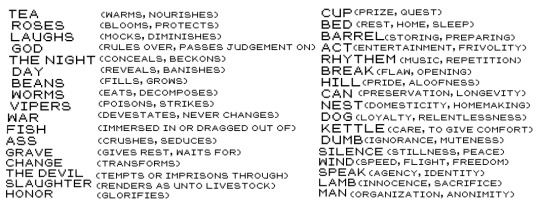

Keep in mind these associations are extremely malleable! These are basically just *my* associations with these words.
The biggest thing to remember is that you can't really define the class and aspect separately! You can't really say "well the aspect of Worms is associated with decay so they can all rot things, and Can class is associated with preserving things so they can all make, like, forcefields around stuff..." You have to treat the title as a whole thing. A Dog of War is not a Dog Class imposed on a War Aspect, it is a Dog of War, it's own whole thing. The way a class or aspect manifests and what domain and powers it conveys is strongly dependent on its relationship with the other half of the title. For example, a Dog of War has domain over soldiers, military action, state sanctioned violence, looting, the abandonment of polite society. They might have powers relating to removing the inhibitions of other towards violence, or steering the movement of armies and mobs. A Dog of God on the other hand, implies worship and intense loyalty. They might have powers related to self sacrifice or doing great violence in the name of whatever they're devoted to.
A Kettle of the Devil is a very interesting title! If I imagine the metaphorical meaning of the Devil's Kettle, I'm put in mind not of a tea kettle, or the large pots for cooking fish referred to by the original aphorism, but of the practice of "kettling," the police tactic of forming up around large crowds and then advance, forcing them into a smaller area where they can be contained and arrested, bottled up like steam in a kettle. The Devil's Kettle conjures an image of surrounding and trapping a large group of people in a particularly hellish situation, like preventing them from fleeing a burning building. So a Kettle of the Devil might have powers related to trapping and driving people into something horrible. You could interpret that literally (makes a slowly shrinking forcefield that pushes enemies into a fire) or metaphorically (knows exactly what buttons to press to make someone feel trapped and as though they have no choice but to do something they know will end horribly).
Alternatively! My girlfriend interpreted the Devil's Kettle as something a baptist grandma would say about some kind of drink she disapproves of (ala The Devil's Lettuce). Something nourishing but inherently sinister and addictive? So their powers might be related to healing, but have dangerous side effects.
But both of those are less meaningful than what Kettle of the Devil implies symbolically to you, personally. Maybe you have some personal associations with Kettles or Devils that most people don't! Maybe you drank a lot of tea growing up and associate Kettles with a kitchens, domesticity, your mom. Maybe you burned yourself really badly on a Kettle when you were young and you associate them with heat and danger! Maybe the first thing you think about when you imagine a kettle is the whistling, so your association is about piercing sound! It's all fluid, as fluid as language and symbolism and association always is. The lists of associations are merely a place to start if nothing jumps to mind.
16 notes
·
View notes
Text

I'm morbidly fascinated by those "quotes" blogs. Whenever one of them makes it onto my dash I often compulsively hate-scroll through it for a couple of minutes, and I almost always find that while *some* of the blog is made up of vetted aphorisms and statements by identifiable people, a LOT of it is always some sort of extremely clumsy platitude attributed to "Unknown", as if it's a piece of ancient folk wisdom--but on closer inspection it's barely meaningful, like the one above. What does that say, "things that are hard to do are hard when you do them"? Yes, it is literally true that difficult doesn't mean impossible, is that really useful to point out? I would even get this more if the quote were something like "Impossible only means difficult"; there ya go, there's a little chicken soup for the teenage soul type of mindbender for ya. But what we have instead is just a definition of difficulty with a list of tags longer than the two sentences themselves. Thanks a lot, real inspiring. And then some of the quotes laid at the feet of poor old Unknown are just something like, "All I need is a cup of coffee, my favorite sweater, and a dog-eared book on a rainy day," and you're like Is this really a quote? Is the idea of "quotes" still worth something if we just mean "anything that could potentially come out of someone's mouth"? If you gave any of the people who run these blogs a copy of Bartlett's it would probably blow their brains out of their minds.
So because I get obsessed with things I don't understand, I start thinking about who it is that cooks these things up. There's someone, somewhere sitting at their computer trying to think of "deep" things to say, things that fit a certain tone and pattern that targets "your loneliest elderly relative on Facebook", and then they just write them down and slap "Unknown" on the end like it's some kind of profound secret that the reader is fortunate to stumble upon. To me, some of the results are just word salad. Like I think I know how this one is going to end, but then:
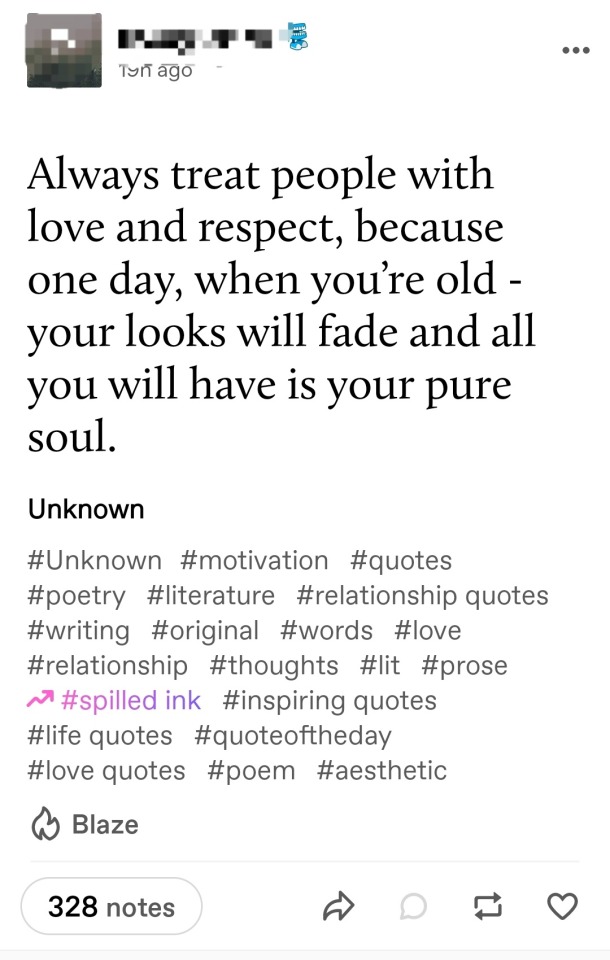
Ignoring the stray hyphen...my "pure soul"? I guess this is one way of saying "it's what's inside that counts", but seriously, what the fuck. What the hell are you talking about. But I have enough self-doubt in my constitution to wonder if I just don't get something here; I start to have a waking nightmare that this is actually an unattributed verse from Rumi or some shit that I'm just too primitive to recognize or understand. So I go Google this, and of course I find 15 or so versions of this:

And I'm back to trying to envision the culprit sitting at their computer trying to figure out how to sound like the oracle at Delphi real quick before their lunch break is over. What motivates someone to do this? Do they think they're going to get a book deal out of it? A lot of people will just do anything for attention; years ago I saw a post with this dry, formal caption about the domestic abuse incidents that led up to the murder of Nicole Brown Simpson along with regular pictures of her with VERY poorly photoshopped injuries. It was like...dude that is all a matter of public record, with real photos already in circulation, WHY ARE YOU FAKING THIS?? Maybe I'm just too much of an alien to understand why anyone does anything at all. But anyway, if this is too much negativity for you before 8am, try this version on for size, and have a terrific day.

22 notes
·
View notes
Text
Aphorisms As Incantation
I have recently been delving into the idea of aphorisms, which are essentially brief, poetic statements that reveal something about the nature of a core concept.
Aphorisms have been a HUGE part of philosophy, both Eastern and Western, and when the Greybeard motif started being associated with wizards, that same idea- that wisdom is brief, easily understood, and beautiful enough to make you think- had a bit of a resurgence in popular media.
I really liked the concept when I learned about it some days ago, because I thought to myself, "What if aphorism could function as a wizardly incantation?" We see a similar concept expressed when turns of phrase become magical foci in Rainbow Rowell's Carry On. (Good book, recommend, please don't immolate me). This functions well because:
A) Aphorisms were often meant to be repeated and remembered. We have record of a LOT of these puppies, from Japanese haiku to the oft-quoted philosophers of the Renaissance. Assembling a personal collection to serve wizardly purposes would not only encourage interaction with older literature (often that tied up with the esoteric arts by proxy) but also give the magician pause to consider their own values and place within the Eternal Tale.
B) Magic serves four basic purposes: call aid, banish threat, discover something unknown, and preserve something important. Aphorisms provide information to aid, calm to dismantle tension, wisdom to consider, and are preservative of a central concept or theme.
I think the job would be done nicely, and am already compiling a notebook of them. Some of my favorites:
"Do not let perfect be the enemy of good." (Idunno, my counselor told me this one).
"See God in everything, and keep it a secret." (Hafiz)
"Just because words are oft-repeated, does not mean they are robbed of meaning." (The Dancing Mistress, in the novel Green, by Jay Lake).
"Life is too short to avoid the small times, too long to avoid the large- and so it is just right for tea." (This one is mine!)
#witchcraft#witchblr#grimoire#spirituality#ritual#aphorisms#philosophy#wisdom#magick#theory of magic
3 notes
·
View notes
Text
new collage/mix out on soundcloud w/ my bf, featuring the following tracks
Michael Pisaro - Hellgrün (Small New World) (2015) 5.4 Emerald Twilight Sjaella - Music For a While (comp. Henry Purcell) Huelgas Ensemble - Deo Gratias (comp. Johannes Ockeghem) Les pieds sur terre - Dessine-moi le bonheur The Monkees - Riu Riu Chiu Syzygys - Harimao Hunters Michel Chion - Le chant des heures Jeff Witscher - 2022 Call Option August For $11.75 VanillaThat Means $3,525 (11.75 * 3 Options [excerpt] Roedelius - Sonntags C'hantal - The Realm Tim Goss - Afterfly VI Donna Lewis - I Love You Always Forever Steve Roden - Forty Hands in Anticipation of a Word Steve Reich - Electric Counterpoint (Fast) E+E - Smile Klein - no more shubz Barbe & Liouba - You Look Ready for Everyday emrys - ah.ah.ah… Melaine Dalibert - windmill Matthew Sullivan - Zen Cab 2 Derek Baron - The Matrix [excerpt] Maxime Le Forestier - San Francisco Sunshine Has Blown - Muji Judith Wright Centre Brisbane 19th December 05 [excerpt] Gutevolk - Silo Liouba - Renault field recordings Liouba - Hugo Talking to Raffat Bill Wells & Maher Shalal Hash Baz - Tipsy Cat Vashti Bunyan - Rose Hip November Graham Lambkin - Aphorisms [excerpt] Graham Lambkin - Horse Play [excerpt] Yao Qingmei - Third verse of the Internationale, sung solo in Monaco (excerpt)
20 notes
·
View notes
Text
I am reading Homestuck for the first time
Homestuck Bookclub had to be delayed to Saturday this time, but we'll meet on Thursday this week! Inspired by my shining example, the other newcomer has begun taking notes. Unlike me, recording my thoughts, they're recording everything.
These are my notes from week 2, 215 through 537:
229: I wonder if Rose’s relationship to her mom isn’t going to be the foil I expected. Setting aside what Rose has said, her mom seems like she’s into more established, antiquated versions of what Rose is into, much like John and his dad. John doesn’t recognize the things he has in common with his father, not seeing the forest of “we both like goofy comedy” for the tree of “dad loves harlequins,” and seeing that aspect of his father in isolation, seeing it as something weird and foreign. John is frustrated with his dad, and that affects how he sees his dad and his actions. Rose seems to be interpreting a lot of what her mother does with irony and malice, but it’s easy to imagine something similar. What if Rose is frustrated for her mother, and sees the things they have in common as mockery instead of common ground?
246: I really thought the meteor would get stopped! Char told me sburb ended the world but didn’t say how or when, I kinda thought John and Rose might overcome this part.
251: Evangelion reference
272: Especially ethnic wedding??
278: It’s cute that John is visibly delighted when Rose grabs the copy of Sassacre’s.
303: Homestuck predicted bone hurting juice
311: I think I have heard Dave’s name more than John’s in all these years.
326: Holy shit 1:

12: get my nacho on aAUUUH
34: I really like the UV weedcoin texture
43: David accidentally drew a face too well.
52: I’m actually watching the character David is playing become a better artist
54: I’m not caught up on Prequel, I’m not caught up on Homestuck, but by god, I am caught up on Sweet Bro and Hella Jeff.
331: The little guy doesn’t have a weapon, he’s just getting the shit beat out of him.
338: testing my senses using every button.
362: Further evidence for Rose’s mom actually being cool.
369: You can’t show me this sequence and tell me these two don’t feel deep love for one another. Those definitely were a lot of liquor bottles but I’m ignoring those to support my theory.
382: Dave is the only one who doesn’t seem to avoid his family. Dude seems to really look up to his brother.
421: I appreciate John’s dad in this 2v1. Sure he lost but clearly he was kicking ass up to that point. They can’t even get close to him.
440: Strong suspicion Rose’s kernel will be prototyped with her cat.
442: GG agrees with my strong suspicion and also seems to be able to see the future.
509: I bet this guy’s a shadow demon
510: Real high horse about racist aphorisms ms “especially ethnic wedding”
522: Dave the PC term is “My own personal 9/11”
523: CAPTCHA!? CAPTCHALOGUE!?
5 notes
·
View notes
Text
"Biopics of massively famous musicians are rarely very good, often because they stumble at the question of whom exactly they’re being made for. Are you making a movie for the already initiated die-hard fans yearning to see the life and times of their hero reflected back at them in exacting detail? Or is your movie a welcome mat for novices, a breezy jukebox of greatest hits aimed at cultivating new generations of fans, goosing streaming tallies and catalog sales in the process? Most musician biopics never manage to resolve this tension, in part because they’re usually also serving a third master, namely the musician’s estate, which tends to hold its own, very specific ideas about on-screen depiction.
Bob Marley: One Love, the new movie about the late reggae superstar that’s produced by Marley’s widow, Rita, along with some of his children, is a biopic that does seem to know whom it’s for, which isn’t a point in its favor. The film is directed by Reinaldo Marcus Green (King Richard) and stars Kingsley Ben-Adir as Marley, who does his best with the role despite not really looking or sounding much like the real Marley. (Within the past four years Ben-Adir has played Malcolm X, Barack Obama, and Bob Marley, quite the triptych of historical figures.) Lashana Lynch plays Rita and steals the film in every scene she’s in, even if the movie’s script fails to elevate her character past the archetypical suffering-yet-supportive wife of a genius.
Rather than taking a cradle-to-grave approach to Marley’s life, One Love instead focuses on a single period of Marley’s career, his self-imposed exile to England in the aftermath of the 1976 attempt on his life at his home in Kingston, during which time he recorded Exodus, the 1977 LP that marked his full breakthrough into global superstardom. The film opens with the assassination attempt, after which we’re quickly whisked to London, where the film depicts Marley writing most of Exodus’ songs in a cloying series of “eureka!” moments that tend to populate movies of this kind. Snippets of Marley’s classic “Redemption Song” surface as a recurring musical motif in the film, and in one of the last scenes, we see Marley performing the song for his awestruck family in a sappy flourish that’s also anachronistic. (By most accounts, Marley didn’t write “Redemption Song” until 1979.) Periodically we’re treated to a series of flashbacks of the singer’s earlier life, a clichéd device that this movie could have used more of: Brief forays into Marley’s conversion to Rastafarianism are surprisingly well done, and a scene of a teenage Marley and the Wailing Wailers performing “Simmer Down” at Coxsone Dodd’s Studio One is the best moment in the film.
One Love is an inspirational tale about a Great Man who used music to unite the world, one that reduces one of the most consequential and complicated artists of the 20th century to a walking fount of genial aphorisms, the guy who suggested we all get together and feel all right. As such, the film indulges a decadeslong public appetite for a particular imagining of Marley that his estate now seems depressingly eager to feed. It’s been 42 years since Marley died of a rare form of melanoma at age 36, and I’m not sure there’s a musician who’s more literally iconic: Go to any commercial district in any part of the world and within minutes you’ll find an opportunity to buy something bearing Marley’s likeness. In the United States, Marley has been a staple of dorm-room walls for generations: The casual and underinformed co-optation of Marley by American bro culture has even inspired a recurring meme in which Marley’s name is erroneously affixed to an image of Jimi Hendrix.
To a certain brand of musical cynic, Marley has become the embodiment of a musician whom people own posters and T-shirts of but don’t actually listen to, which isn’t totally fair to most of the owners of those posters and T-shirts. Some of Marley’s music is still enormously popular: His 1984 greatest hits compilation Legend is currently enjoying its 820th week on the Billboard 200, a position it will likely maintain for the foreseeable future given One Love’s early, strikingly robust box-office projections. The only album that’s spent longer on the chart is Pink Floyd’s Dark Side of the Moon.
But in the pop-cultural imagination, Legend has completely eclipsed everything else Marley ever released. The album has sold more than 15 million copies in the United States alone, while no other Marley LP has sold even 1 million stateside. From a purely mathematical standpoint, this would indicate that for many fans, Legend is the first and only Marley album they’ll ever listen to. I’m not sure there’s another greatest hits compilation that has played such an outsize role in the public definition of an artist.
Legend is a fine little collection, but the idea that it’s some sort of one-stop synopsis of Marley’s career is absurd. For starters, 10 of its 14 tracks date from the period of 1977–80, a four-year time frame that represents the height of Marley’s global popularity but is a relatively minuscule cross section of a staggeringly prolific, nearly two-decade-long recording career. (Five of Exodus’ 10 tracks are included on Legend, which I suspect is one reason that One Love is so invested in the album’s significance.)
This period also coincides with a time when Marley’s music seemed to take a step back from revolutionary politics, a tack that may have been driven at least in part by the aforementioned assassination attempt. The Marley canonized on Legend is not the Marley who sang “I feel like bombin’ a church/ Now that you know that the preacher is lyin’ ” or who called for “burnin’ and a-lootin’ tonight … burnin’ all illusion tonight” or declared that “Rasta don’t work for no CIA.” The dominance of Legend in the U.S. is particularly striking when one considers that Marley’s highest-selling album in this country during his lifetime was 1976’s Rastaman Vibration, which peaked at No. 8 on the Billboard 200 and includes such overtly political tracks as “Crazy Baldhead,” “Rat Race,” and “War.” Legend doesn’t include a single track from Rastaman Vibration, instead opting for romantic fare like “Is This Love” and “Waiting in Vain” and feel-good anthems like “One Love/People Get Ready” and “Jamming.” (For an excellent deep dive into the history and legacy of Legend, I recommend this article from the Ringer earlier this week.)
One Day’s Director Has No Regrets About the Movie’s Controversial Ending
Legend’s preeminence has helped turn Marley into the musical equivalent of a tourist destination, at which One Love is just one more cozy attraction. This is worse than a shame, because the real Bob Marley was one of the most remarkable musical talents of the 20th century. As a songwriter, he was so prolific that music seemed to pour out of him, a quality that has sometimes led to a naturalization of his gifts that veers into exoticizing primitivism. (One Love certainly partakes in this.) But rather than being some carefree savant, Marley was a fiercely disciplined and ambitious artist from the very beginning. He wrote and recorded his first single, “Judge Not,” in 1962 at the age of 16, and it remains an astonishing debut, an effortlessly catchy melody sung by a voice that sounds both nervous and supremely confident in a way that only a teenager can manage.
By the time he signed to Island Records in 1972 and began his ascent to international superstardom, Marley had already written a lifetime’s worth of great songs. He had a preternatural ear for hooks and crafted songs that were ready-made hit records, three-minute gems of perfectly crystalized musical ideas. As a singer, his indelible tenor rasp and thrillingly improvisational style were the byproducts of an extraordinarily well-honed sense of intonation and time. And during the 1970s, he fronted what might have been the best band on the face of the earth, grounded in the peerless rhythm section of drummer Carlton Barrett and bassist Aston “Family Man” Barrett, the latter of whom died earlier this month at age 77. (Aston’s son and namesake, an accomplished musician in his own right, plays his father in the film.)
One Love doesn’t know how to begin exploring this artist and his art in any way that even begins to be interesting. Instead it just feeds back the same sanitized and saccharine idea of Bob Marley to the same audience who has been eating that up for generations. It’s a movie about a poster. Over the end credits of One Love, archival performance clips of Marley flash onto the screen, and for a few moments we’re treated to sounds and images that are infinitely more magnetic and thrillingly alive than anything we’ve seen over the preceding 100-ish minutes. That Bob Marley, and the extraordinary body of music he left behind, is still out there for those who go listening for it, but this movie isn’t where you’ll find him."



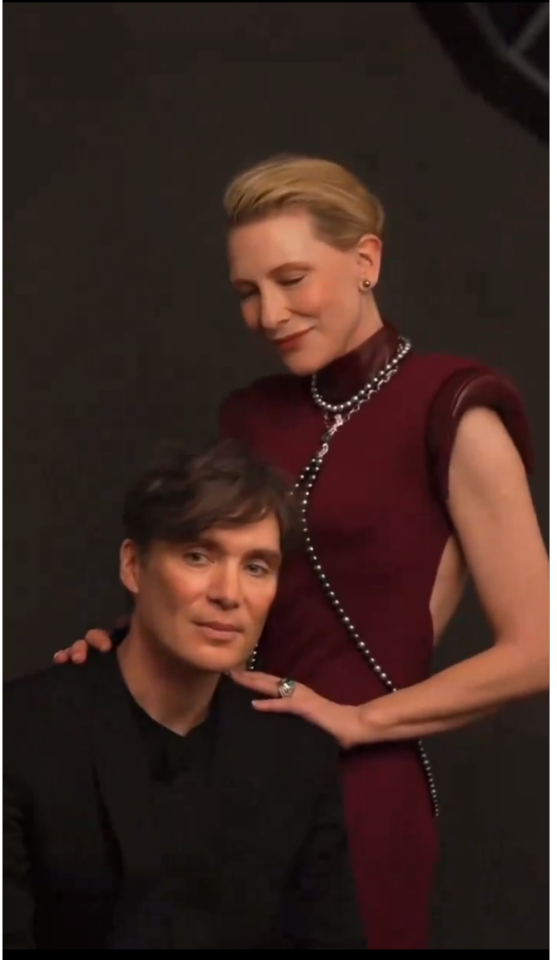


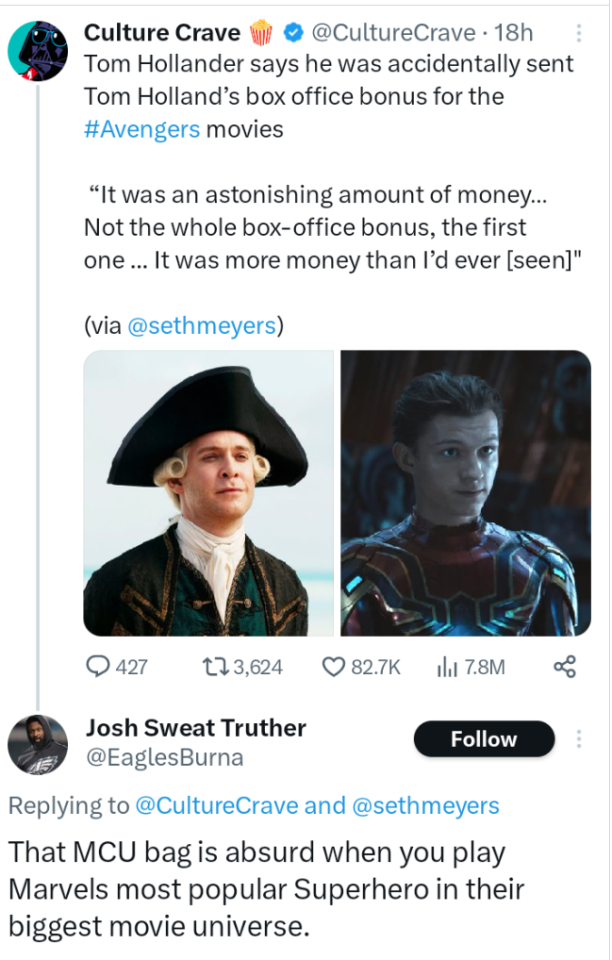



#Jamaica and The Legendary Marley Family Sell Patriarch Bob Marley Down The River For Weak Tepid White Washed One Love#Starring British Lavender Mafia Boy Kingsley Ben Adir#Irish Mob#Corrupt British Film Industry#British Thugs Allowed To Play Historic Black Figures#Malcolm X#Barack Obama#Hollywood Gay Mafia Connections#Scientology#Sony Pictures David Geffen#Warner Bros#David Zaslav#IAC#Barry Diller#Kingsley Ben Adir#David Oyelowo#Tom Hollander#Kristen Stewart#Elton John#Cillian Murphy#Stephen Fry#Mark Gatiss#Capote and The Swans Star Used In Threat Against Spiderman Star Tom Holland#British Parliament#BBC#ITV#Jamaica Compromised#Charlie Cox#Daredevil
8 notes
·
View notes
Text
Provenance mysteries: July 2023

The third provenance mystery of 2023 features two books, both by Stobaeus, and both printed in Lyon by Sebastianus Gryphius in 1555:
Sententiae ex thesauris Graecorum delectæ, quarum autores, circiter CCL. Citat
Sententiarum Ioannis Stobaei tomus secundus
Although the second book is apparently the second volume to the first, both books were issued independently of one another. The ‘second volume’ is a unique item, with this being the only recorded copy – until recently the Universal Short Title Catalogue had it listed as a ‘lost book’.
While there is no mystery concerning one of the hands present in ‘tomus secundus’, since it is clearly a hand-written index in Robert Ashley’s hand, the second hand remains unidentified.
Stobaeus was a 5th century anthologist originally from Macedonia (the city of Stobi to be precise) and is known not for his own writings, but for having compiled a variety of extracts from Greek writers, based on notes he made from his own readings. It is through these extracts that we retain much of original Greek literature and philosophical writings, albeit in a handed-down, extracted format.
The two books issued by Gryphius would have formed part of the broad range of classical works produced by this well-respected French printer during the sixteenth-century. Gryphius specialised in producing ‘pocket’ editions of Latin classics, potentially to rival the editions being produced by Aldus Manutius. Gryphius produced books as small as sextodecimo (16mo), measuring, like these ones, approximately 12cm in height (although sizes for 16mo books could differ).1. Title page
As can be seen above, Gryphius used a truly fantastic printer’s device, depicting a griffin (a play on his surname) perched atop a book (to reflect his trade as a printer) under which is suspended a winged globe (the significance of which escapes me), surrounded by his motto, ‘Virtute duce, comite fortuna’, taken from Cicero.2. Second hand rotated
The unidentified hand, in addition to writing these notes on one of the final blank end-leaves, has annotated the work throughout with manicules (pointing hands), dashes, and underlining. As this hand is present on the leaf facing the marginalia written in Robert Ashley’s hand, it provides us with a good comparison between two early modern readers, and how annotated their books. Ashley’s focus was on indexing the work to highlight the themes of interest to him, whereas the other annotator was interested in noting aphorisms from Stobaeus and Plutarch.

As ever, if you recognise this hand or have further comments please get in touch: [email protected].
Renae Satterley
Librarian
July 2023
#library#law library#mtlibrary#inns of court#libraries#history#rare books#london#books & libraries#rarebook
24 notes
·
View notes
Text
Rick Rubin (with Neil Strauss) — The Creative Act: A Way of Being (Canongate)
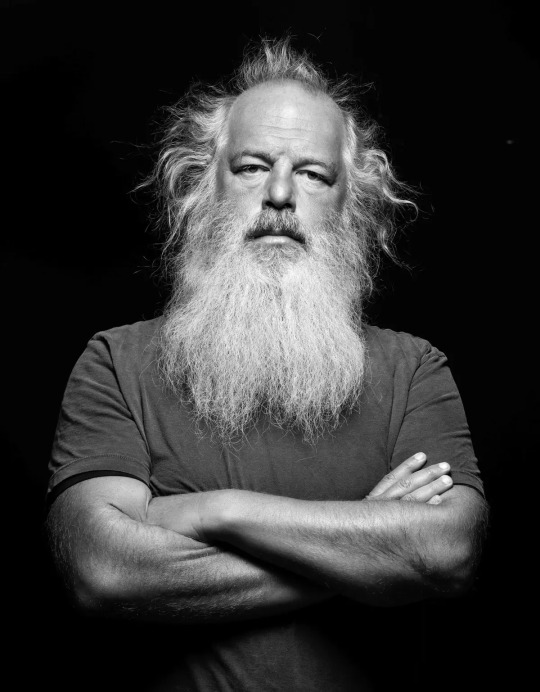
Mega-producer and record label magnate Rick Rubin brings us his first book (co-written with Neil Strauss), The Creative Act: A Way of Being. At 404 pages, the book is a surprisingly breezy read, giving some insight into how Rubin approaches the art of being creative. Which for him boils down to a way of being. Those looking for juicy anecdotes about recording sessions with Johnny Cash, LL Cool J, Slayer, The Red Hot Chili Peppers or any of the other innumerable artists Rubin has worked with will be disappointed. But for those curious about the modus operandi behind one of the most influential record producers of the last 50 years, and how this might relate to one's own life, The Creative Act: A Way of Being could prove useful.
Admittedly, I was at first skeptical when the book caught my eye in a bookstore window. I was like, That Rick Rubin, the producer? Well, why shouldn't an immensely successful record producer know something about creativity? It was more the framing of this knowledge as a way of being that caused a brief spate of disbelief on my part. Growing up in Los Angeles (The Land of Fruits and Nuts, as my hard-scrabble relatives in South Boston referred to California in general) I was used to seeing books from dime-store gurus. Edgar Cayce, Ram Dass and Timothy Leary paperbacks lined my mother's bookshelves. I had girlfriends who went to Golden Dawn temples, friends who dragged me along to channeling sessions for some deity from Venus. It was hard for me to take any of this very seriously.
Maybe it was the extreme disconnect between Rubin's commercial background and his espoused role as a seer that pushed me over the edge and caused me to buy the book. The opening quote from American artist Robert Henri sets the tone for what follows: The object isn't to make art, it's to be in that wonderful state which makes art inevitable. The book therefore provides less a toolbox for working on one's life than a series of vignettes where Rubin extrapolates on various contingencies related to achieving a state of mind and spirit where creativity is possible. Some of these topics include, Listening, Self-Doubt, Non-Competition, Freedom, Inspiration and Awareness. Basically anything which Rubin feels has pertained to his creative process is included in this book.
Ironically, what came more to mind while reading this was not Rick Rubin's background but the German artist Joseph Beuys' famous dictum, Everyone is an artist (Jeder Mensch ist ein Künstler). Unlike Rubin, Beuys did not frame his belief as much in the context of a spiritual journey, but like Rubin he did see himself as a kind of shaman or teacher who could lead society onward to a new — and more positive — direction by unleashing the creative possibilities each person innately possessed but perhaps did not know they had. For Beuys, this would later morph into a concept of social sculpture, where the creative state in each person would further society as a productive, forward-thinking organism.
This would also be the gist of Rubin's book. He's not trying to tell us how to make a better record, write a more catchy song, more successfully promote an artist's career (although all these things are mentioned tangentially throughout the book) but to help people realize their own unique creative strengths in the hopes of steering society in a less self-destructive direction. Though the main text and sprinkling of aphorisms scattered liberally throughout the book often verged for me on a kind of treacly sweetness, in the end I came away feeling that Rubin had really made a sincere attempt to show people the way to something they might not have realized they'd had all along.
The most inspiring take-away from the book would be this sense that even in a person's everyday life there is this great wellspring of energy to approach the most mundane tasks from a creative standpoint. That being creative doesn't necessarily mean creating something, making some beautiful object. It's about a state of mind where creativity equates with a way of existence, of approaching life with an awareness that will put one in a place where they can reconnect to a life energy which, at the very least, will lead one to experiencing a more personally fulfilling existence.
All this being said, the book also includes many concrete examples of how to circumvent creative dilemmas and meltdowns, whether this be in the recording studio or just trying to make it through a workday. Though Rubin seldom mentions people he's collaborated with by name in the book, he gives numerous examples of how he works in the studio — not necessarily microphone placement or which effects he used, but more how he guided various recording artists on an inspirational or spiritual level to realize their full creative potential. And in this context the book moves beyond its often sentimental, esoteric trappings to provide some real-world advice for people, whatever their vocation in life, to find a new way of being.
Jason Kahn
#rick rubin#neal strauss#the creative act: a way of being#canongate#jason kahn#bookreview#dusted magazine#creativity
4 notes
·
View notes
Text
[Podfic] gentling of painful spines by an_aphorism
It's been 84 years (or rather 8 months), since I last posted a podfic and I felt the urge to do one today so I looked for one of my favorites that had a low word count and banged it out today because I wanted to. And here we are.
Thanks to @an-aphorism for their permission to record.

13 notes
·
View notes
Text
Italia
Day 9 - Comedy of Errors
Steps walked: 26,411
Flights climbed: 15
Vehicles ridden: 2
Points of interest visited: I don’t even know anymore.
Ancient things spotted: too many
Too much of a good thing. All good things. Pick your favorite aphorism. Today was a bust.
The disappointment started when we woke up before sunrise to pop down to the Ponte Vecchio (just downstairs) to see the sunrise. Yesterday would have been a perfect day. Instead today was totally overcast so we got a Timelapse of a whole bunch o’ nothin’, and a few pictures on the bridge before it swarmed with people.

It pained me to leave Firenze. Especially as the walk to the train station took place before people had woken, when the streets were mostly empty, just how I like it. I didn’t want to tear my eyes away from the past, from Leonardo’s world, the wellspring of the art mouth. But alas.
We made it early to the train station to find our train delayed. It gave Dan enough time to find us vegan croissants for the ride. I’m counting this as a win. Another win: our seats were not next to each other. BUT. We gambled and sat together and no one came to us angrily demanding we move. Another win. The journey into Roma was uneventful. We arrived and made the exhausting journey with luggage in tow to our stay, about a twenty minute walk from the train station.
The apartment wasn’t ready for us, but they let us drop our luggage off, able to return after 3. Our first stop was the crypt of the Capuchin Monks. When Dan first told me about the crypts decorated with the capuchin bones, my mind immediately went to the monkeys and I thought, “Those poor monkeys!” To which Dan responded “I’m sure they had their consent,” referring of course to the monks. The confusion comes from the fact that there are both monkeys AND monks called Capuchin. The monks were named first. We didn’t get to see the catacombs when we were in Paris so I was all for seeing some bones. Welp. Right off the bat they took our money and told me I couldn’t have bare shoulders. I had nothing to cover my shoulders on me because it was a hot and sunny afternoon. They charged me a euro for a paper gown to cover up. This is a loss. And put me in a real sour mood. As you can see.

Especially considering the first thing we saw was a mutilated tortured body on a crucifix. But my shoulders are too inappropriate. They talk about it being a holy place and I can hear anyone arguing in their favor that it’s a way to be respectful blah blah blah. My being respectful is paying admission to learn about your culture without shouting “everything you believe is a lie!” Bare shoulders and bare knees being covered isn’t a sign of respect. It’s a sign of control.
They also make you walk thru a museum before you get to the cool stuff, and give you some audio guide which I bailed on immediately because it was some insufferable two-person-play about who gives a shit. Not me. Which is why I bailed. The museum also wasn’t interesting. It was a lot of religious artefacts that weren’t by any artists I’m interested in. So we sort of walked quickly thru to get to the crypts. Of course they take away the most important part of visiting a cool place: taking pictures. If you have no pictures, did it even happen? If you have no pictures, were you even there?

Yes, we were there.
We left in record time and decided to get lunch to stave off any more potential grumpiness. There was a vegan restaurant super close to the next thing we wanted to visit, the Ecstasy of Saint Teresa.
Vegan restaurant had no openings for people sans reservations. Another loss. Followed by a little win! Twenty paces back we had passed by a vegetarian Indian restaurant so we grabbed lunch there after some difficulty in deciphering the Italian/hindi menu. A little spicy but pretty good.

Then we looked up the super nearby Ecstasy, available to view for free at the Santa Maria della Vittoria… closed. Opens at 3:30. Hours away. Another loss. We toyed with killing time since we were so close to the church and so so tired of walking, and we meandered thru a nearby park and sat down but ultimately decided to head back to the room. We tried taking a route past both the Villa Medici and the Keats-Shelley house, two nearby buildings that had housed — you guessed it — the Medicis and the poet Keats (but not either of the Shelleys though I’m sure they all spent plenty of time there, and apparently Mary’s desk is there. You know, the one in which she kept Percy’s calcified heart?) but we didn’t even and instead trudged back to the room. ‘Twas literally a trudge. We were both so tired, our feet and legs hurting. We have logged like three marathons worth of miles in the last week. We are feeling it.
We tried three times to pick up a few groceries — namely bread — for breakfast and long story short we were unsuccessful. The slightly longer version involves bread that was behind an unmanned counter that I fetched [against the rules] and subsequently tried to pay for being snatched out of my hand and angrily thrown away while a woman yelled at me in Italian.
Empty handed, we collapsed on the bed at our apartment and took an angry nap while I obsessed over the unpleasant interaction with that woman, even in sleep. (I have a condition. In which I obsess. I was born this way.)
Dan made me a cup of tea and he had a cup of coffee as we braced ourselves to try to salvage the day. We had reservations for a vegan restaurant that has cats, the Romeow Cat Bistrot. It was high on my list in Roma but regrettably far from our accommodations. (An hour walk!) So we found a few points of interest semi-along the way and headed out, our legs and feet only mildly rested.
First stop: the Mouth of Truth. Closed for the night.

Second stop: Circus Maximus. Closed. For an event next weekend.
Third stop: Aventine Hill. Dark. The sun has set. Shitty views of the city. There’s a keyhole that you can look thru for a great view. The line was about a hundred people deep and moving slowly. But because everything else we had planned to see was closed, we got in line to kill time and maybe get a good view after all, even if it was dark. Dan grabbed a beer while we waited, I waved away a bunch of cigarette smoke from the people in line ahead of us, we moved up about 50 spaces in half an hour, and then decided to bail. We had enough time to get to the cat bistrot in time for the reservations we had to make two weeks ago, and there was no chance of getting to the keyhole in time. Another bust.

A quick aside here to address the things we’ve encountered during our numerous walks thru Roma:
- These drivers are the craziest drivers in all of Italia. We haven’t gotten hit, but it is a true battle of wills. Who wants to go more? You? Or the driver? Or that other driver? Let’s find out and godspeed.
- Firenze felt like an old city. This feels like a modern city filled with old shit. Everywhere you look: ruins. What the hell is that ruin? Don’t know. It’s clearly not that important. It’s not even on Google maps.

- Seriously with the ruins tho. Our host in Venezia excitedly told us about an old wall, “the first wall” I dunno what he said, right next to the train station. Sure enough there it was. No signs, nothing. Barely even worth looking at. Dan felt mildly obligated because our Venetian host was so nice but I was too tired to take the few steps in that direction. No regrets. We’ve walked by like a hundred other 2,000 year old things that are just by the side of the road. Or two hundred buildings that are 1,000 years old with AC window units, clearly apartments now. Anyway it’s like… enough.

We made it to Romeow before they opened at 8, which was also the time for our reservation, and joined the small, growing crowd of people waiting to be let in. There’s been a lot of joking about how Roma is ruined after the day we’ve had, much to Dan’s particular chagrin as he not only has such fond memories of visiting this city in the past, but I had no initial interest in coming here so the pressure is on. So it was easy to joke about walking home without dinner and call the whole day a wash when they were ten minutes late to let us in. But we could see some sleepy cats in the window. They let us in two at a time thru a two-door system to prevent any critters from escaping, and we were seated upstairs. Only one cat joined us on the second level; a little black rascal who played a little bit but otherwise stretched out luxuriously on one of the many cat lounge areas set up. They have a strict “no flash” policy and seem to care a lot about the welfare of the cats. Lots of toys, perches, and escapes from unwanted attention. Booklets on every table reminding patrons not to pick up the cats or wake them and to let the cats set the tone of any interactions.


The cats all seemed super chill. I wish they’d come over to us, tho. We got to pet two of them. A black one and a white one. Both friendly but mostly uninterested. The food was good.
I managed to convince Dan to take the metro home because it was such a straightforward journey. We even managed to snag a baguette on the way! But we did get yelled at about a tomato and she wouldn’t let us buy it because we hadn’t weighed it. What the hell, Roma? It shouldn’t be this hard to buy groceries. Anyway, the metro was easy and fast — once we got the tickets, which was as complicated and frustrating as Italia’s track record might suggest. But it worked out. We made it home after breaking our daily step count record and I even killed a mosquito before bed.
Let’s see what tomorrow brings.
2 notes
·
View notes
Text
Why do I, like many others, find Kafka’s voice so invigorating, when it incessantly expresses such agony and despair?
Why do I, like many others, find Kafka’s voice so invigorating, when it incessantly expresses such agony and despair? It must have to do with the inventiveness he brought to, as he put it in the diaries, “depicting my dreamlike inner life.” Far from sounding like a broken record, he is perpetually reimagining his plight, now in an animal story, now in a collection of enigmatic aphorisms, now in a charmingly self-deprecating letter. In my translation of the diaries, I sought to reveal his genius not as something fully formed, embalmed and fit for a museum but as that propensity for unsparing self-examination and open-ended literary experimentation that animated all his work.
— Ross Benjamin, from A Century On, the Search for the Real Franz Kafka Continues (NY Times, Feb 2, 2023)
8 notes
·
View notes
Text
Some of those extended aphorisms have no recorded existence prior to this century.
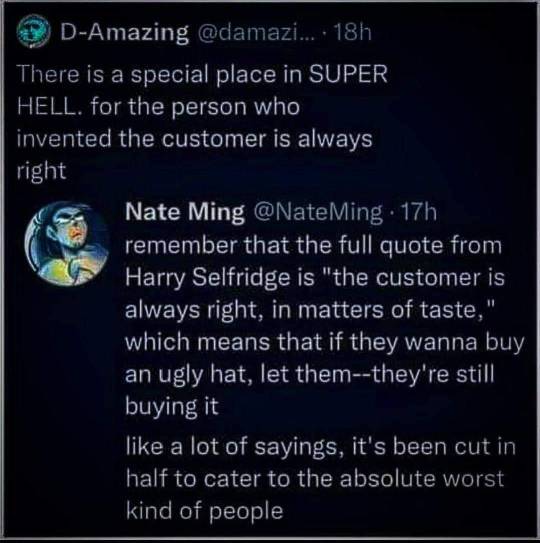
103K notes
·
View notes